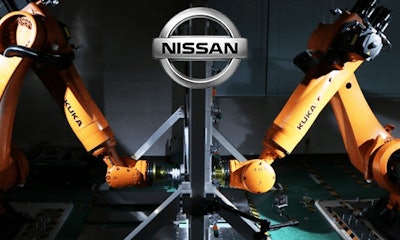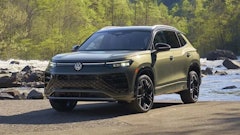
Toronto, Ontario — Oct. 21, 2019 — By teaching a pair of robots to craft steel automotive parts for a fraction of the cost, Nissan hopes to give its discontinued vehicle models a new chance at life.
The Japanese automaker taught a team of two robots how to craft car parts out of sheets of steel. Known as dual-sided dieless forming, the process involves two synchronized robots working from opposite sides of a steel sheet. Each robotic arm is equipped with a diamond-coated tip, which is used to gradually shape the steel sheet into automotive parts. The system offers flexible production, short lead times, and minimal upfront costs, making it appealing for commercialization.
In a commercial setting, the device could be used to produce and sell a wide variety of replacement parts in small volumes for Nissan’s discontinued models—something that was previously not possible due to high upfront costs and long lead times. Typically, one-off or short-run parts are expensive, but, if commercialized, Nissan’s new system could change that.
Until now, dual-sided dieless forming has been considered too difficult to commercialize due to the complex programming involved in training two robots to operate synchronously. Existing attempts have relied on single-sided forming, which introduces limits when moulding the steel into complex shapes. By placing robots and tools on opposite sites of a steel sheet, the arms can create more difficult and detailed shapes.
The breakthrough in mass-production was made possible by Nissan’s Production Engineering Research and Development Centre and Nissan’s research division. The automaker has said it represents three major breakthroughs: the development of advanced programs capable of controlling two robots with high accuracy, allowing for the formation of detailed shapes; the application of mirrored diamond coating to tools, reducing friction and the need for lubrication; and the optimized pathfinding logic for robots.
The automaker has not released details on when the system will be commercially available. With this development in mass production behind it, Nissan hopes to use its research and development resources to pursue more flexible low-volume production techniques.























